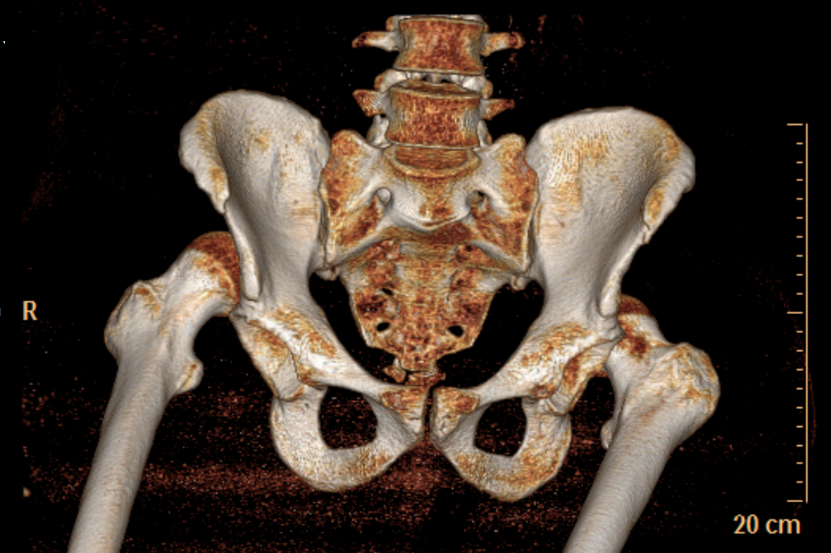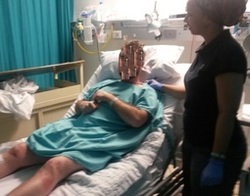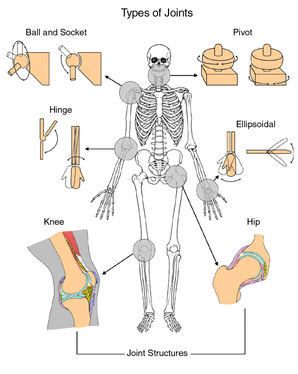During a hike up Cape Town's popular Lion's Head, a local hiker sustained a fall during his accent. Our patient was unable to recall the exact nature of the incident, and after sustaining the injury was promptly assisted by the Wilderness Search and Rescue team who where performing an exercise in the immediate area. The Wilderness Search and Rescue team safely moved the patient off of the mountain, and into a waiting ambulance, and after initial stabilization, was admitted to Christiaan Barnard Memorial Hospital and seen to by the ER Doctor on call.
|
After a thorough examination, it was found that both his hips joints were dislocated, with the ball-shaped head of both femurs protruding out behind the sockets of the pelvis. A decision to take the patient to theater and perform a relocation under anesthesia was made, and both femurs where successfully relocated. Our patient is currently in ICU recovering well, undergoing the necessary physiotherapy associated with such injuries. Apart form a few abrasions, bruises and a minor rib fracture, and a uncomplicated fractured ankle.
|
|
What is a dislocation?
A dislocation occurs when bones that are usually connected at a joint, are separated. Common dislocation sights include: shoulders; elbows, fingers; hips; knees and ankles. This typically arises from a joint experiencing a significant force or impact. Although any person may suffer from a dislocation, the elderly are far more susceptible to this type of injury, specifically if they have a decreased mobility and are unable to prevent falls. Children may also represent a high risk population group due to the robust nature of typical play. A dislocation may often be associated with fractures and is a serious injury which may also lead to or be associated with damage of ligaments, nerves or blood vessels. |
Click to set custom HTML
Recognizing a dislocation:
Dislocations may be quiet obviously seen and recognized once they have occurred. There may be a change in the usual shape of the affected body part with various soft tissue injuries of the overlying area.
Dislocations may be associated with:
Dislocations may be quiet obviously seen and recognized once they have occurred. There may be a change in the usual shape of the affected body part with various soft tissue injuries of the overlying area.
Dislocations may be associated with:
- Numbness or tingling at the joint or beyond it
- Intense pain
- Limited range of movement
- Soft tissue injuries such as swelling or bruising
- Obviously out of place, discoloration
|
Treating dislocations: It is advisable to limit movement once you have sustained a dislocation, and if are unable to move due to a loss of range of motion or due to extreme pain, call the local Medical Emergency Services for assistance. Always treat these injuries as a possible fracture, and try to immobilize the limb as you find it post injury. RELOCATION OF A DISLOCATION AT HOME IS NOT ADVISED. In hospital treatment would include:
When treated early, most dislocations will not result in permanent injury. the surrounding tissue injury may take up to 3 -6 weeks to heal, and injuries to nerves and blood vessels may result in more long-term or permanent problems. Injuries to ligaments may require surgical repair. |
Prevention of dislocations and Accidental injury:
Most dislocation may be prevented through the practice of safe behavior. General principles include:
Most dislocation may be prevented through the practice of safe behavior. General principles include:
- Teach children safe behaviors
- Watch and supervise children where necessary
- Gates on stairways may help prevent falls
- Make use of handrails when going up and down staircases
- Keep a first aid kit ready
- Use nonskid mats in wet areas such as bathrooms
- Remove electrical cables off the floor
- Wear protective clothing and gear when doing physical activities such as sport
- Remove throw rugs and consider replacing them with nonskid rugs
- Avoid standing on unstable items such as chairs
An Injury and Prevention Awareness Project brought to you by Christiaan Barnard Memorial Hospital Trauma & Emergency Centre.




 RSS Feed
RSS Feed
